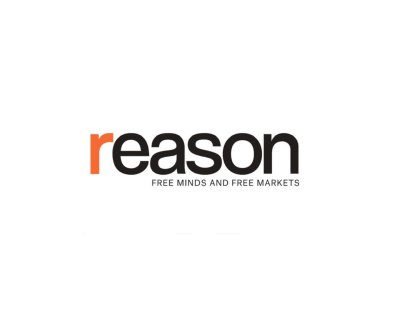Trump, Who Wants To ‘Straighten Out the Press,’ Sues The Wall Street Journal Over ‘Fake’ Epstein Letter
On Friday, President Donald Trump sued The Wall Street Journal for reporting that he contributed to a 2003 collection of letters marking the 50th birthday of financier Jeffrey Epstein, who was later charged with sex trafficking involving underage girls. Although it is well established that Trump was friendly with Epstein when that leather-bound set of birthday wishes was produced, Trump insists he did not write the “bawdy” letter described by the Journal, which he calls a “scam” and a “fake story.”
Trump presented his defamation lawsuit, which he filed in the U.S. District Court for the Southern District of Florida, as part of his broader campaign to rein in news outlets that he thinks have wronged him in one way or another. “I’m gonna sue The Wall Street Journal just like I sued everyone else,” he told the paper when he was asked to comment on the story. “The Press has to learn to be truthful, and not rely on sources that probably don’t even exist,” Trump wrote on Truth Social, bragging that he had “already beaten George Stephanopoulos/ABC, 60 Minutes/CBS, and others.”
The litigation to which Trump alluded covers a wide range. His defamation claim against ABC, for instance, was at least plausible, since it was based on demonstrably inaccurate reporting. But his lawsuit against CBS, which averred that the network committed consumer fraud by editing a pre-election 60 Minutes interview with former Vice President Kamala Harris in a way that made her seem slightly more cogent, was utterly frivolous. At this point, it is hard to say where Trump’s complaint about the Journal‘s story falls on that spectrum. But in his determination to punish journalists who offend him, Trump typically has not paid much attention to the distinction between actionable torts and constitutionally protected speech.
A ‘Terrific Guy’
In addition to Dow Jones, which owns the Journal, the defendants in Trump’s lawsuit include News Corp, which owns Dow Jones; Rupert Murdoch, News Corp’s majority owner and emeritus chairman; News Corp CEO Robert Thomson; and the two reporters who wrote the story about the Epstein letter, Khadeeja Safdar and Joseph Palazzolo. That article describes a letter “bearing Trump’s name” that includes a typewritten imaginary conversation between him and Epstein. The text, Safdar and Palazzolo report, is “framed by the outline of a naked woman, which appears to be hand-drawn with a heavy marker. A pair of small arcs denotes the woman’s breasts, and the future president’s signature is a squiggly ‘Donald’ below her waist, mimicking pubic hair.”
In the dialogue described by the Journal, the “Donald” character says “we have certain things in common,” and the “Jeffrey” character concurs. Both men are “enigmas” who “never seem to age,” they agree, and both understand there is “more to life than having everything.” According to the Journal, the dialogue concludes with a message from “Donald”: “A pal is a wonderful thing. Happy Birthday—and may every day be another wonderful secret.”
Safdar and Palazzolo “falsely pass off as fact that President Trump, in 2003, wrote, drew, and signed this letter,” Trump’s lawsuit says. “The Article does not attach the purported letter, does not identify the purported drawing, nor does it show any proof that President Trump has anything to do with it. Tellingly, the Article does not explain whether Defendants have obtained a copy of the letter, have seen it, have had it described to them, or any other circumstances that would otherwise lend credibility to the Article. That is because the supposed letter is a fake and the Defendants knew it when they chose to deliberately defame President Trump.”
Safdar and Palazzolo say their account is based on “documents” that they “reviewed,” along with information from “people familiar with them.” They imply that the documents included “pages from the leather-bound album” compiled for Epstein’s birthday, although they also say “it isn’t clear how the letter with Trump’s signature was prepared.” A Dow Jones spokeswoman said, “We have full confidence in the rigor and accuracy of our reporting.”
If Trump did in fact write, or at least authorize, the birthday letter that the Journal attributed to him, the paper did nothing that would justify civil damages. But if that letter is a forgery, as Trump implies, he might have a valid defamation claim.
To support that claim, Trump has to show that the Journal acted with “actual malice,” meaning it knowingly or recklessly reported something that was demonstrably false. The lawsuit complains that Murdoch and Thomson “authorized the publication of the Article after President Trump put them both on notice that the letter was fake and nonexistent.” Since Trump and White House Press Secretary Karoline Leavitt both told the Journal the letter was “fake” prior to publication, a jury might reasonably conclude that the paper acted recklessly, assuming that Trump did not really write the letter. But Trump also has to prove that the Journal‘s claim was defamatory, which might be trickier.
Trump avers that the Journal‘s story, which “went viral” after it was published on Thursday evening, has caused him “overwhelming financial and reputational damages” that are “expected to be in the billions of dollars.” But since Trump admits he was friends with Epstein in 2003 and for more than a decade prior to then, it is debatable whether the Journal‘s report caused any additional harm to the president’s reputation, let alone damages adding up to “billions of dollars.”
At the time, Epstein’s celebrity friends also included former President Bill Clinton, billionaire Leslie Wexner, and Harvard law professor Alan Dershowitz, who represented Epstein after his first arrest in 2006. Safdar and Palazzolo report that Wexner and Dershowitz joined Trump in contributing to the birthday album.
By itself, the claim that Trump participated in the birthday album merely confirms what the public already knew. “Is it defamatory that one millionaire sent a birthday card to another in 2003, before Epstein was discovered?” media attorney Damon Dunn wondered in an interview with Business Insider.
The imaginary
Article from Reason.com

The Reason Magazine website is a go-to destination for libertarians seeking cogent analysis, investigative reporting, and thought-provoking commentary. Championing the principles of individual freedom, limited government, and free markets, the site offers a diverse range of articles, videos, and podcasts that challenge conventional wisdom and advocate for libertarian solutions. Whether you’re interested in politics, culture, or technology, Reason provides a unique lens that prioritizes liberty and rational discourse. It’s an essential resource for those who value critical thinking and nuanced debate in the pursuit of a freer society.



